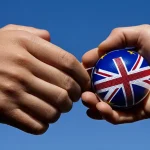Overview of Current UK-EU Trade Agreements
The Trade and Cooperation Agreement (TCA) stands as the cornerstone of the current UK-EU trade deal after Brexit. This agreement establishes zero tariffs and zero quotas on goods that comply with the relevant rules of origin, helping maintain a relatively frictionless flow of products between the UK and EU markets. However, it also introduces new customs procedures and regulatory checks, marking a significant shift from the seamless trade previously enjoyed.
Several main sectors feel the impact of Brexit trade agreements. Goods like agriculture, automotive, and fisheries experience particular attention due to differing regulatory standards and border controls. Financial services, represented in the UK-EU trade deal discussions, remain in a more fragile state, lacking comprehensive equivalence arrangements under the current framework.
Also read : Why Are British Cultural Icons Gaining Global Attention?
A critical factor shaping current UK-EU relations is the extent of regulatory alignment. While the TCA allows for some divergence, the degree of alignment affects customs procedures and market access. The balance between sovereignty and smooth trade remains delicate, resulting in ongoing negotiations to resolve practical challenges like border checks or product compliance.
In essence, the existing Brexit trade agreements create a new, more complex trade landscape, requiring careful management of regulations and customs rules to minimize disruption across key sectors.
Also read : How Can UK Universities Enhance Their Support for International Students?
Recent Developments in UK-EU Trade Relations
The post-Brexit period has seen complex implementation updates and several disputes within the UK-EU trade news landscape. Since 2021, challenges have arisen over customs checks and border controls, especially concerning Northern Ireland. The Northern Ireland Protocol remains a focal point, with adjustments under the Windsor Framework aiming to ease trade flows and reduce political tension. These changes attempt to clarify customs arrangements and address EU concerns about market integrity while respecting the UK’s sovereignty.
Geopolitical events—such as shifting global alliances and economic pressures—also influence the latest UK-EU negotiations. For example, energy security and supply chain resilience issues have become priorities, prompting both sides to revisit their trade strategies. These factors add layers of complexity to ongoing talks, affecting tariffs, regulatory cooperation, and sector-specific agreements.
Overall, current UK-EU trade news highlights both progress in adapting frameworks post-Brexit and continued friction points. This dynamic environment underscores the necessity for flexible, responsive negotiation processes to secure stable economic ties amid evolving political and economic contexts.





